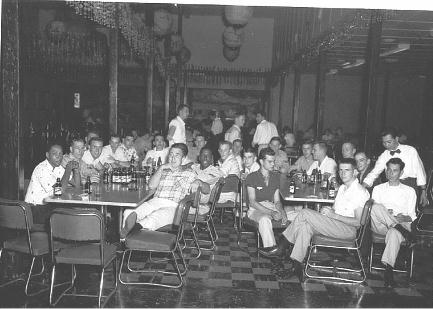| Submitted 22 March 2002 |
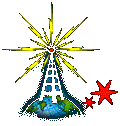
During the first few years of Shulinkou's existence, it was not the easiest for those assigned there. Below are photos (click on photos to enlarge) taken during the years 1955 and 1956 which documents those difficulties, as well as living conditions. Al High also provides a narrative about his time at Shulinkou. His career in the Air Force included: basic training at Sampson AFB, NY; Basic Chinese at Yale 54-55; assignment to Japan, PI, and Taiwan 55-56; Andrews AFB, Washington 56-58; Intermediate Chinese at Yale 58-59; Okinawa 60-64; Goodfellow 65; NSA 65-69; JSPC 69-71; followed by NSA until retirement in 1987. A note of interest mentioned by Al: "I forgot to add that I was present on the floor at Linkou the day that operations ceased. At that time, I was there TDY from NSA. Things had changed a bit from the 'EARLY DAYS'."
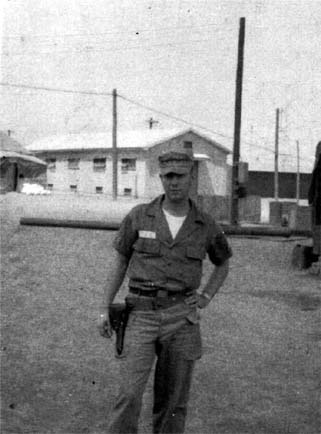
About ready to pull courier duty, and with a loaded pistol is Al High of North Carolina.
Al was a linguist assigned to the unit. This was one of those other jobs as assigned (...courier duty).

The three tents, setting in the open area, were home for all the linguists assigned to Linkou.
(Probably had their own tents so that they wouldn't mix up Mandrin with Morse.)
Just getting to Linkou in those days was a treat. We left Yale in June 1955, and went straight to Travis AFB in California. From Travis, we went to the Port of Oakland for a 22 day trip across the Pacific on the USNS Daniel I. Sultan. We got to Yokohama and then to Shiroi AFB outside of Tokyo. We waited there until we got clearances, and then went to Clark to wait again to go on to Taiwan. We went by C-47, and upon landing at Taipei Airport we were loaded on a 6X6 with only a partial canvas top and made the long trip up the mountain in a drizzle. The first thing we did at Linkou was go to KuLinLin to get rubber boots which would be the preferred footware for most of our tour.
Work was something else, as none of us had any tech training so it was strictly OJT. We were led into OPS, and were shown an SP600 and a PT-6 and went from there. Our OPS Officer was Captain George W. Card, "97 pounds of blue twisted steel" - was the way he referred to himself. Our shifts were 2 days on and 2 days off. We worked 1200 to 1700, 2400 to 0700, 1700 to 2400, and 0700 to 1200 and then 2 days off. Great for Taipei doings.
The linguists lived in tents which, except for typhoons, was better than the temp barracks as we had pot belly stoves and we did have heat. The food was always great and the booze cheap. As for water, all was trucked in and the only time you could get a fairly warm shower was on mids when we could take short breaks. Toilets were a long six seat outhouse with 55 gallon drums cut in half to catch the waste. Toilet paper was a figment of your imagination and the Sears catalogs went fast.
During our time on the hill waiting for our next mid we would have a few beers, and on Friday nights the cooks would fix pizza for the “CLUB”. Now, in order for you to buy a piece of pizza for 5 cents, you had to agree to drink a free Kirin beer. The reason for the free beer was that no one wanted to pay to drink that "rot gut", and it was the only way to get rid of it without just throwing it out.
During typhoons we always hoped we would be stuck in Taipei, as there we could stay dry. And even get a good shower when we could sneak into one of the Hostels down there.
When we got a new OPS Officer, Captain John Oberg, and a typhoon was expected he always came to my tent. He knew I kept Cognac in my footlocker and we killed many a bottle just waiting. By the time the typhoon hit, who cared.
Things at Linkou were pretty informal in those days, and we did things by the seat of our pants. One day I was sitting in my tent, and Captain Del Lang came up and asked if I was busy. I said no so he said "lets go!" We hopped into a jeep, and with a comm van we headed out to the boonies to try and find a new site. Try and do something like that today. We came back a couple of days later.
All in all a great tour, the likes of which were never repeated on Taiwan. When we left, we again had to wait at Clark for transportation back to the ZI. While there in the Philippines, most of us spent our free time in the showers trying to get rid of the “RED MUD OF LINKOU”. Even years later I still had that mud on my duffle bag.
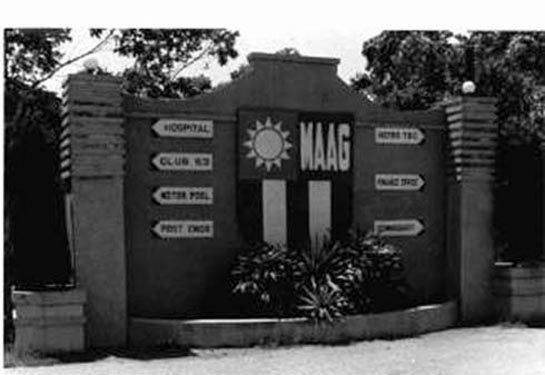
entrance with this sign. The MAAG compound is where everyone processed in for assignment on Taiwan.
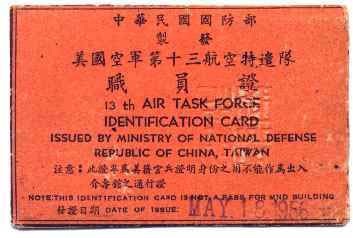
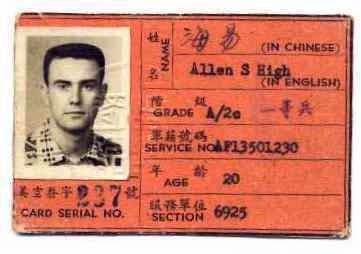
It identified you as an American, in case there was any doubt. Above is 20-year old Airman 2nd Class Al's "mug shot."
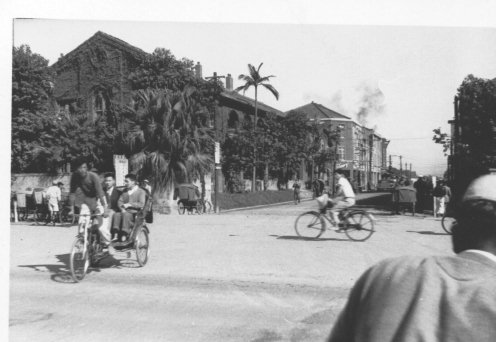

Sin Alley on the left, and Chung Shan Peilu on the right.
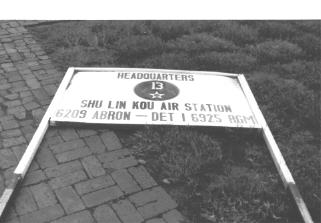
and did some serious damage to Shulinkou. See other photos of the damage below.
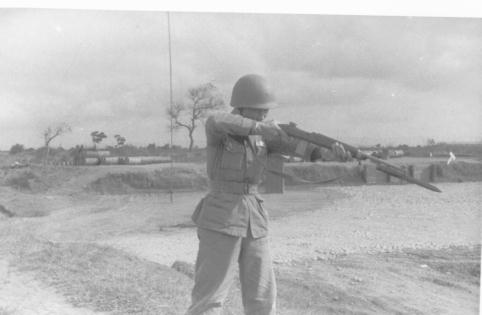
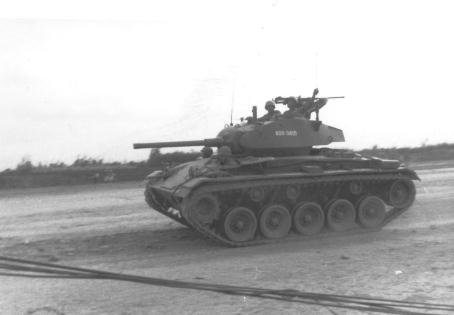
Further, the ROC Army was very proficient with the M1 carbines, and they knew how to drive a tank through anything.
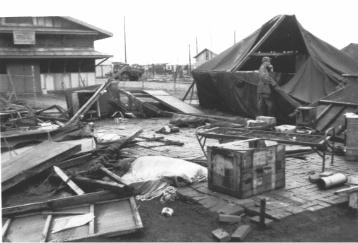
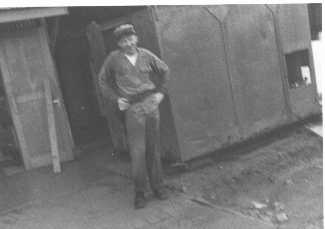

Who needs air conditioning at Linkou, or even doors for that matter? Left to right are Ray Delisa, and Al Greenburg who were elated over their remodeled tent.

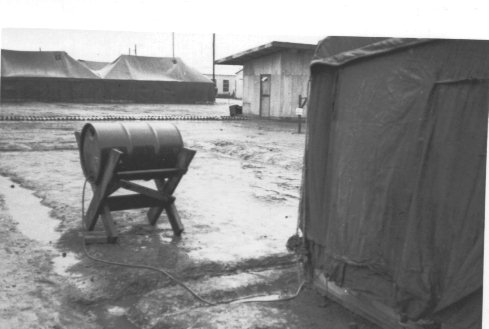
Thanks to the "heat pump", showers weren't always cold. At least during the day time.

This was an important antenna as it maintained a link to the world.
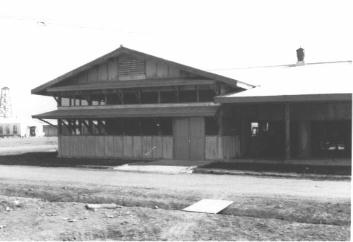
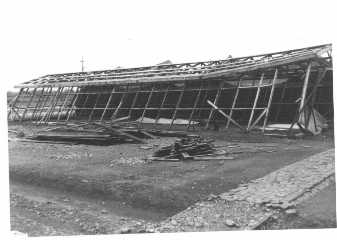
It was nearly completed before the typhoon blew through. It was perhaps the most important building on Linkou.
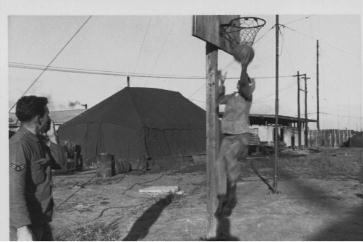
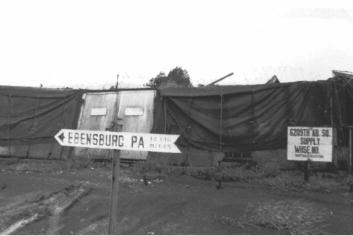

the storm, allowing the barber to offer specially priced haircuts. The haircuts cost less if it started to rain.

This was just before a shift change.

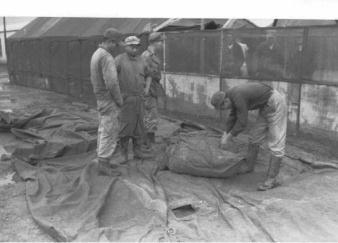
Looking on behind the screened wall of a tent that partially survived were a few airmen.
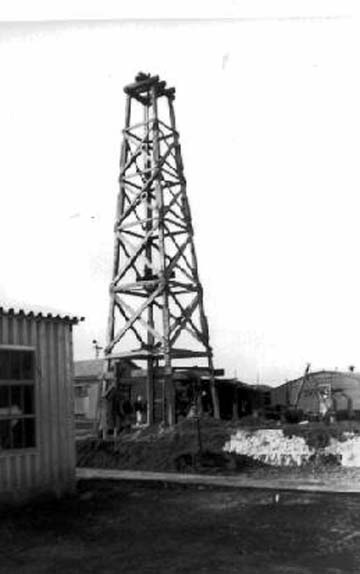
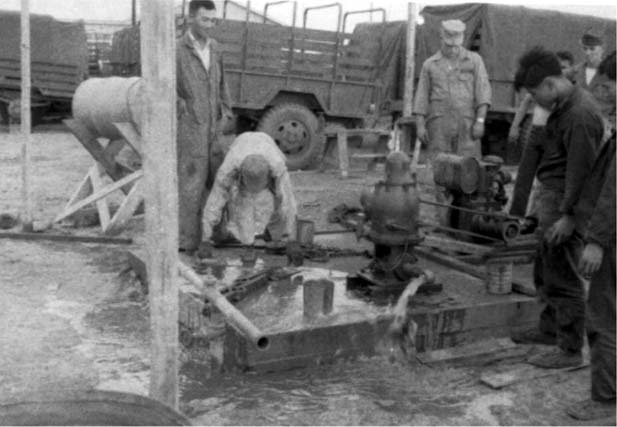
of the bored hole. Not the red mud that everyone expected to come gushing up. According to Al, they finally hit water the day he shipped out.
Here are some of the original Det 1, 6925th RSM unit (later 6987th SG) that had been relieved of duty at Shulinkou in October 1956. Returning stateside meant flying through Clark AFB, in the Philippines. Here is the group in the Clark Airman's Club drinking some San Miguel beer. Al High is 3rd from left in the photo with the most number of empty San Miguel beer bottles in front of him. (Are you, or anyone you know, in this picture?)
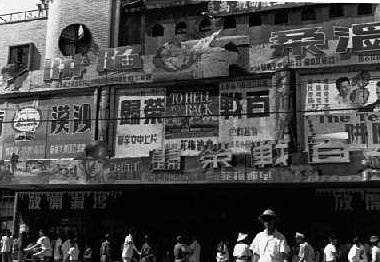
you can make out in English the movie "To Hell and Back."